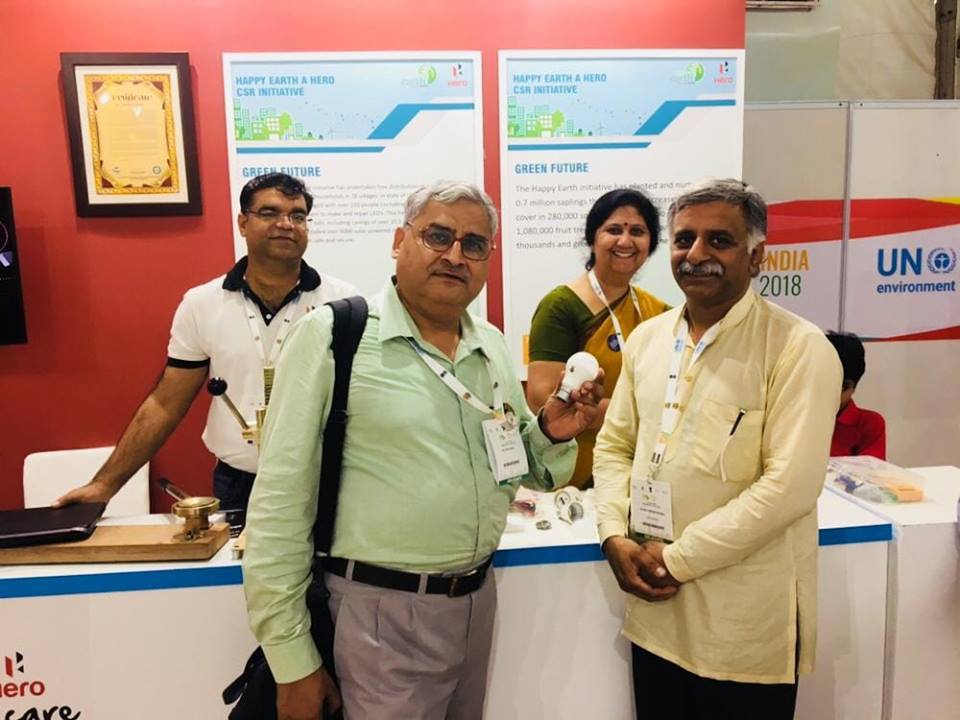Sometime around 2006-07, SPECS was conducting a series of lectures-talks on climate change for schools across the state. At one such workshop, a child raised a pertinent question. He asked, “You are talking of saving energy but where are the bulbs and tools available to make this possible?”

The electricity transmission in the hill villages was so pathetic that people had no choice but to use bulbs as high as 100 watts! The child’s question had underlined the vacuousness of theorizing without grasping the situation on the ground. It changed the very course of the discussion and in a way, forced SPECS to return to the drawing table and take-up the child’s perspective. The question for the organization was whether they could provide the child with a bulb that would be right from the energy conservation point of view but also be affordable for a rural family.
CFL bulbs were available in the market but their cost was prohibitive. Another alternative in news those days was LED lights which looked promising and appropriate - but they were still a few years away from the market. This called for extensive search for secondary information and literature survey on LED, which led SPECS to develop a special driver first and then manufacture a 2-watts LED bulb that was finally placed in a Reading Lamp – for students! This was a great success, but the problem was still there as light was not bright enough!
The 2-watt LED reading lamp was fine, but the major handicap was electricity transmission, as its availability in the hills was extremely erratic and weak. For eg. a 100-watt bulb could glow only like 20-watt! So, the question raised by the child still remained valid and rankled, which urged SPECS to go solar. It resulted in designing a Home Light System – electricity for the kitchen and the main room where children could also study. In fact, in rural hilly areas, children sometimes study in the cozy warmth of the kitchen.
This development posed a successive predicament. On a full sunny day village receives sunshine for several hours a day, which made SPECS to design an Urja Bank – a 150 watts solar inverter for power storage – which could light up about 20 bulbs and a TV or a computer for several hours. SPECS trained some people in the hills as well as inmates of the prison in Dehra Dun to manufacture the Urja Bank.
SPECS always tries to find solutions to the unresolved problems like energy needs of the people in the hills, who need to carry a torch (whose cells are periodically replaced) to go out after dark. This led to the development of Energy Efficient Solar/AC Lights and Low-Cost Portable Solar Emergency Light with Mobile Charging Facility. The later was an extremely innovative product with a 2 watt, luminous-210 lux capacity. It used lithium-ion battery which provided backup for 24-hrs.
SPECS continues advocacy and work in energy efficiency, and have trained ………. tribals from about 18 states across the country namely– Uttar Pradesh, Himachal Pradesh, Jammu & Kashmir, Rajasthan, Madhya Pradesh, Chhattisgarh, Bihar, Jharkhand, Maharashtra, Gujarat, Arunachal Pradesh, Mizoram, Sikkim, Telengana, Andhra Pradesh, Manipur, Tripura and Uttarakhand. These states were identified due to availability of bamboo familiarity of people with bamboo craft. SPECS trained them to assemble LED light and bulbs, and make fine lamps using bamboo. So far, 108 people have been trained, of which almost 60% of the participants were illiterate but manage to carve, hone and finish seasoned bamboo lamps. Familiarity with the resource would certainly enable many of the participants to take this up as a livelihood activity.
